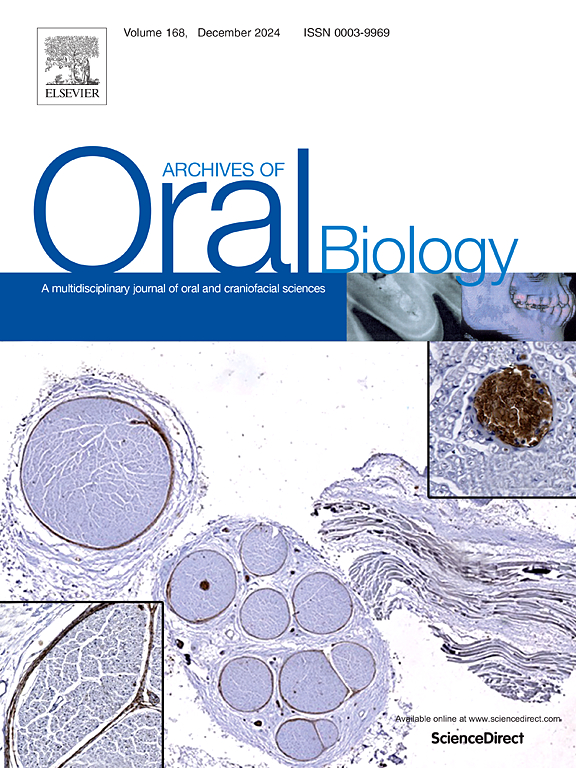Impact of optimised sample preparation method on DNA recovery from subgingival plaque in a population with periodontitis
IF 2.1
4区 医学
Q2 DENTISTRY, ORAL SURGERY & MEDICINE
引用次数: 0
Abstract
Objective(s)
This study aimed to evaluate whether an alternate sample preparation method could enhance DNA yield from subgingival plaque samples collected from patients with untreated periodontitis.
Design
Fifty-six consecutive participants with untreated periodontitis each provided two subgingival plaque samples from periodontal sites with probing pocket depth (PPD) > 5 mm. In the alternate method (AM), 1.4 mm ceramic beads were added to the sample prior to supernatant removal to protect the microbial pellet, after which samples were processed using a standardized extraction protocol and subjected to 16S rRNA gene sequencing (V3–V4 region).
Results
A total of 112 samples were analysed. DNA concentration (ng/µl) was significantly higher in the AM group (23.82 ± 23.31) compared to the standard method (SM) group (13.6 ± 17.07; p < 0.001). The DNA input in 2.5 µl was also significantly greater in the AM group (1156 ± 1139 ng vs. 277.96 ± 273.12 ng; p < 0.001). Shannon diversity was significantly higher in AM than SM (p = 6e–04). No significant differences in DNA yield or microbial diversity were observed between the two periodontal sites within each group.
Conclusion
The alternate sample preparation method improved DNA concentration compared to standard sample preparation method of sub-gingival plaque analysis collected from patients with untreated periodontitis.
优化样品制备方法对牙周炎人群龈下菌斑DNA回收的影响
目的:本研究旨在评估一种替代的样品制备方法是否可以提高未经治疗的牙周炎患者牙龈下菌斑样本的DNA产量。设计连续56名未经治疗的牙周炎患者,每人提供两个牙周部位的龈下菌斑样本,探测袋深(PPD) >; 5 mm。在替代方法(AM)中,在去除上清之前,将1.4 mm的陶瓷珠加入样品中以保护微生物颗粒,然后使用标准化提取方案对样品进行处理,并进行16S rRNA基因测序(V3-V4区域)。结果共对112份样品进行了分析。AM组DNA浓度(ng/µl)(23.82±23.31)显著高于标准方法(SM)组(13.6±17.07);p & lt;0.001)。AM组2.5 µl的DNA输入量也显著增加(1156±1139 ng vs. 277.96±273.12 ng;p & lt;0.001)。AM的Shannon多样性显著高于SM (p = 6e-04)。两组牙周部位的DNA产率和微生物多样性均无显著差异。结论与标准样品制备方法相比,交替样品制备方法可提高未经治疗的牙周炎患者龈下菌斑分析的DNA浓度。
本文章由计算机程序翻译,如有差异,请以英文原文为准。
求助全文
约1分钟内获得全文
求助全文
来源期刊

Archives of oral biology
医学-牙科与口腔外科
CiteScore
5.10
自引率
3.30%
发文量
177
审稿时长
26 days
期刊介绍:
Archives of Oral Biology is an international journal which aims to publish papers of the highest scientific quality in the oral and craniofacial sciences. The journal is particularly interested in research which advances knowledge in the mechanisms of craniofacial development and disease, including:
Cell and molecular biology
Molecular genetics
Immunology
Pathogenesis
Cellular microbiology
Embryology
Syndromology
Forensic dentistry
 求助内容:
求助内容: 应助结果提醒方式:
应助结果提醒方式:


